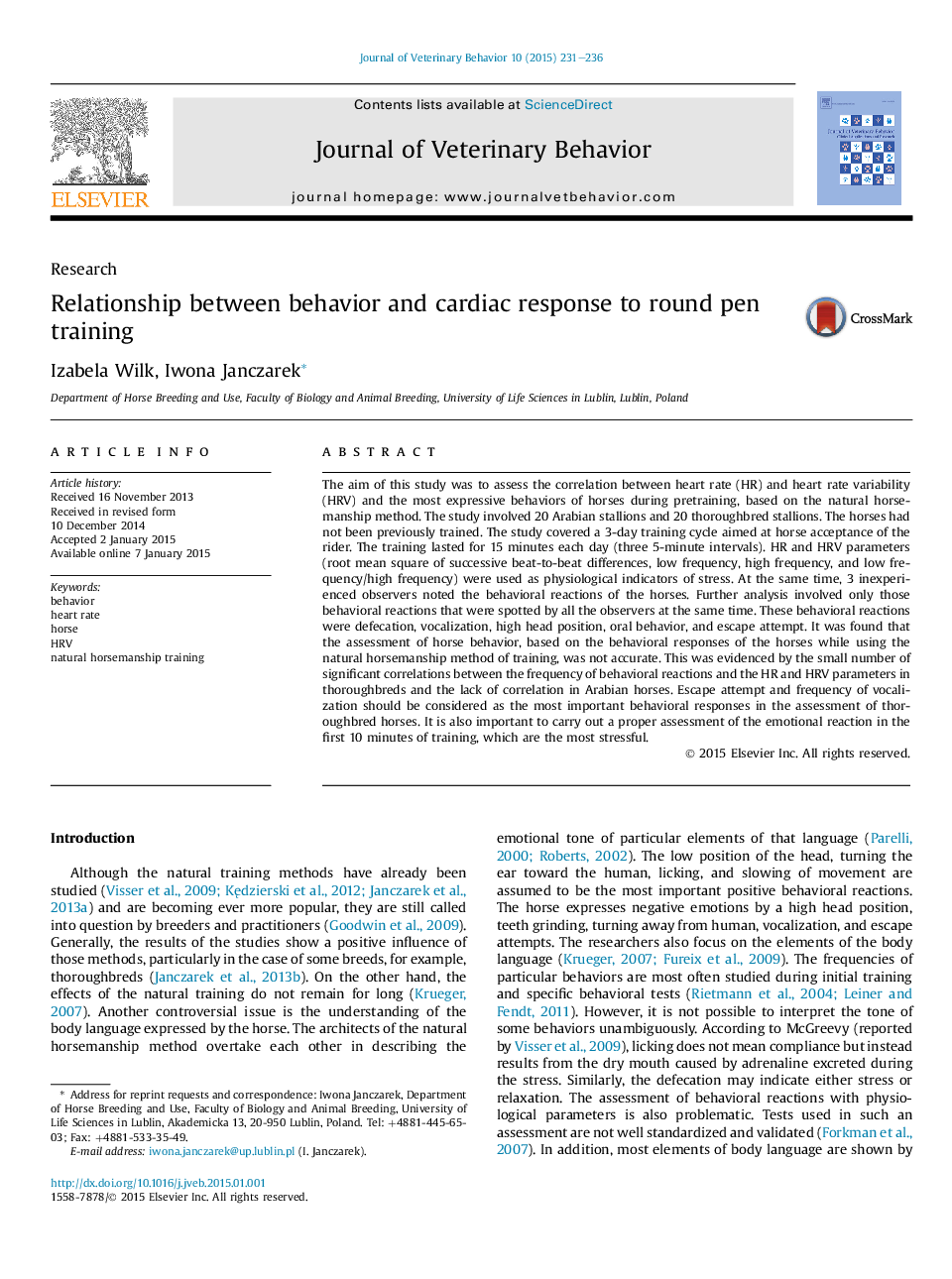| Article ID | Journal | Published Year | Pages | File Type |
|---|---|---|---|---|
| 2398669 | Journal of Veterinary Behavior: Clinical Applications and Research | 2015 | 6 Pages |
The aim of this study was to assess the correlation between heart rate (HR) and heart rate variability (HRV) and the most expressive behaviors of horses during pretraining, based on the natural horsemanship method. The study involved 20 Arabian stallions and 20 thoroughbred stallions. The horses had not been previously trained. The study covered a 3-day training cycle aimed at horse acceptance of the rider. The training lasted for 15 minutes each day (three 5-minute intervals). HR and HRV parameters (root mean square of successive beat-to-beat differences, low frequency, high frequency, and low frequency/high frequency) were used as physiological indicators of stress. At the same time, 3 inexperienced observers noted the behavioral reactions of the horses. Further analysis involved only those behavioral reactions that were spotted by all the observers at the same time. These behavioral reactions were defecation, vocalization, high head position, oral behavior, and escape attempt. It was found that the assessment of horse behavior, based on the behavioral responses of the horses while using the natural horsemanship method of training, was not accurate. This was evidenced by the small number of significant correlations between the frequency of behavioral reactions and the HR and HRV parameters in thoroughbreds and the lack of correlation in Arabian horses. Escape attempt and frequency of vocalization should be considered as the most important behavioral responses in the assessment of thoroughbred horses. It is also important to carry out a proper assessment of the emotional reaction in the first 10 minutes of training, which are the most stressful.
